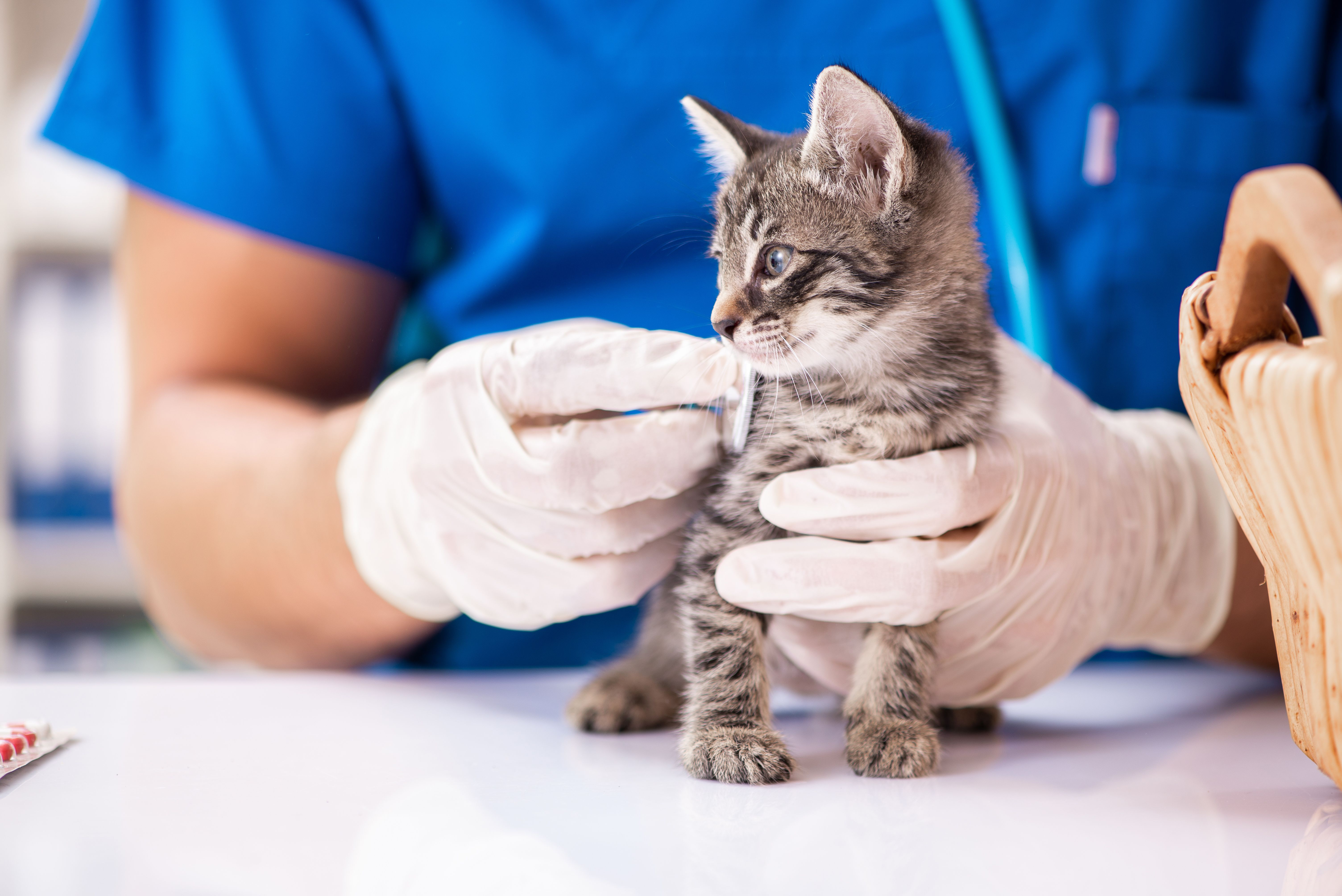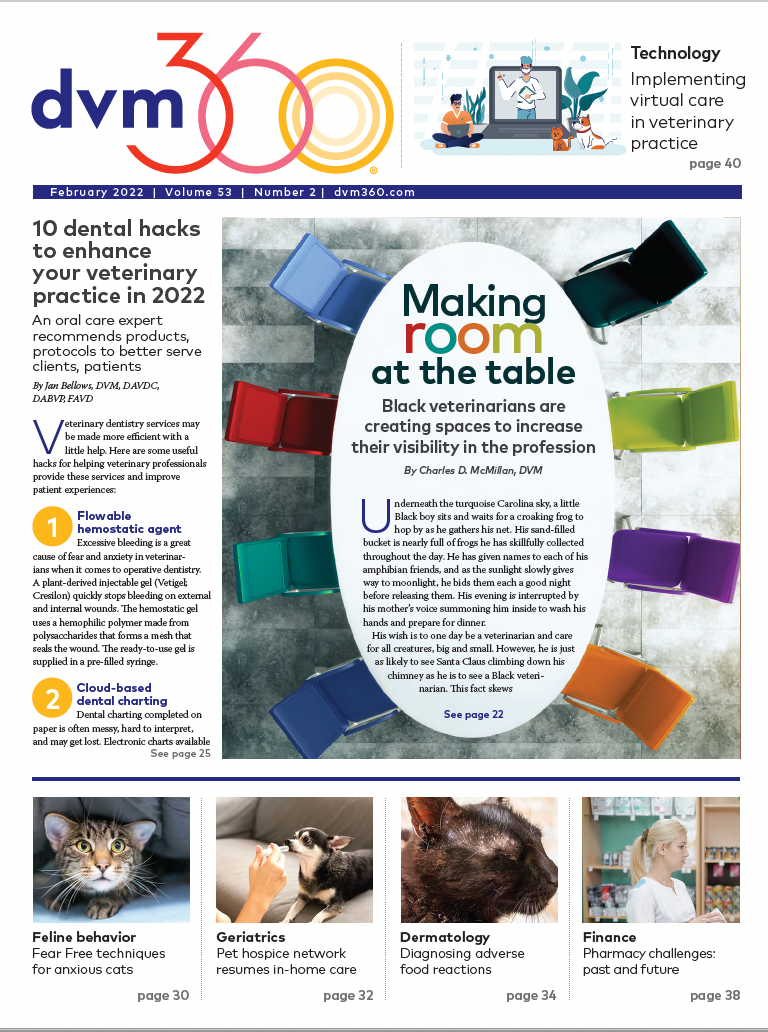It’s no secret that cats are especially unfond of veterinary visits. Why is this? The obvious answer is that going to the veterinarian is often unpleasant for felines, according to Lisa Radosta, DVM, DACVB, owner of Florida Veterinary Behavior Service. However, the longer answer is that because cats seldom leave the house, it is virtually always associated with a negative experience, namely going to the veterinary clinic.
“[Cats] come to regard all the things we use to transport them and all the stimuli at the hospital—from the cat carrier to the car to the look of the hospital to the parking lot to the way we look. Every single thing becomes regarded as a precursor of painful and uncomfortable things that are going to happen to them,” Radosta said.
“Take dogs, on the other hand. Dogs get tons of experience that are on the positive side of the scale [when they leave the house]. They leave the house lots of times to do really fun stuff, even just [going to] the backyard,” she said. “Dogs are definitely afraid of the vet, there’s no doubt. However, very close to 100% of cats are frightened at the veterinarian’s office. That’s the difference.”
Therefore, Fear Free, the culture of respect for animals and essentially patient-centered medicine, is especially beneficial for anxious feline patients. Like humans, pets have a basic right to feel safe, Radosta said, and Fear Free empowers veterinary professionals to understand how their behaviors can be threatening to pets, recognize that animals feel the same emotions and pain that humans do, then modify their behaviors to respect that.
“You get more flies with honey”: A success story using Fear Free
Radosta had a cat patient that needed blood drawn. Although other veterinary clinics tried and failed to accomplish this task, Radosta and her team succeeded by incorporating Fear Free methods during his visit. This included the pet parent staying in the room and petting the cat, wrapping him in a towel, and drawing blood from the larger, more easily accessible cephalic vein in the front leg rather than the medial saphenous vein, which requires body manipulation to reach.
“Why were we able to do that? It was purely in the way we managed the cat, because I didn’t give him any medication. That’s one of thousands of stories of how we were able to get something done that couldn’t get done somewhere else just because of our approach. You get more flies with honey than vinegar. That is truthful. You will. And that happens in veterinary medicine, too,” Radosta said.
Fear Free methods
To implement Fear Free methods in your practice, Radosta first advised to discontinue some traditional methods for handling cats, including grabbing or pulling them out of carriers, dumping them out of carriers, and beyond.
"We want to be proactive in trying [supplements in] medications to help eliminate fear, [using] towels and gentle handling to facilitate restraint, keeping pet parents with their cats so they’re happier and calmer, examining cats in the carrier, and setting up the environment so cats are likely to be happier,” Radosta said.
She also suggested, if possible, to set up a dedicated cat room in your practice that promotes a positive experience for these patients. It should be far from the intensive care unit, where animals are recovering, and you can include a pheromone analogue and design it so there are reduced sounds in the room.
How practices can transition to Fear Free
Radosta explained that the veterinary technicians are the team members most responsible for implementing restraint, so it is important that they are trained in handling pets using Fear Free approaches. Additionally, she noted that transitioning to Fear Free involves leadership that evolves the entire practice culture and allows this innovative change to take place.
“[Implementing Fear Free] has to be a culture change from top to bottom, and having worked in big practices but also having been in thousands of veterinary practices as a consultant, helping them change their culture—I promise you this: If it comes from the top down, it’s going to happen. If it comes from the bottom up, I don’t know. It usually does not happen,” Radosta said.
“We need leadership to step up and say, ‘This is our new culture, so this is all the information we’re going to give you. We’re going to train you [and] give you everything you need to be successful,’” she added.
Fear Free: The new standard of care
Radosta concluded that Fear Free is the new standard of care, and those in the veterinary industry should want to adhere to or exceed this standard.
“[Fear Free] is [no longer] something that just soft-hearted veterinarians do,” Radosta emphasized. “It’s something we know affects our medical outcomes. It affects our client retention, client [adherence], and [is] something we’re all worried about in 2022. It affects our employee retention. We are all fighting to keep staff because they are switching jobs or switching careers.”

